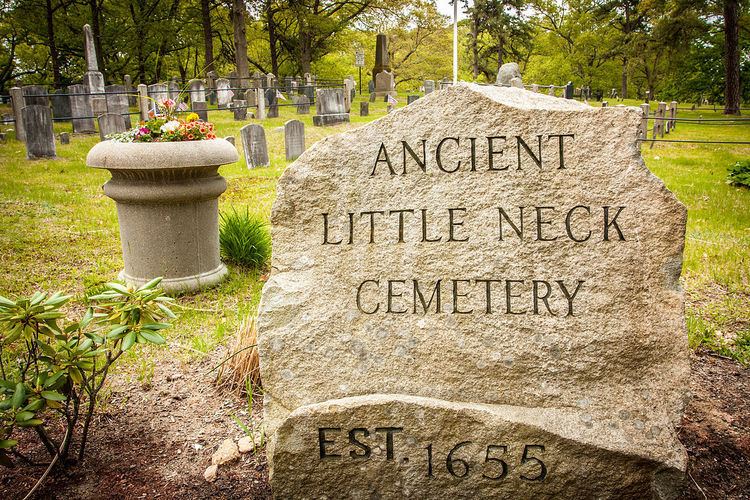Architect Unknown NRHP Reference # 80000100 Area 3 ha Added to NRHP 28 November 1980 | MPS East Providence MRA Address Riverside, RI 02915, USA Year built 1655 | |
 | ||
Hours Open today · 8:30AM–5PMFriday8:30AM–5PMSaturday8:30AM–5PMSunday8:30AM–5PMMonday8:30AM–5PMTuesday8:30AM–5PMWednesday8:30AM–5PMThursday8:30AM–5PMSuggest an edit Similar Gate of Heaven Cemetery, Lakeside Cemetery Association, Swan Point Cemetery, North Burial Ground, Oakland Cemetery | ||
The Little Neck Cemetery is a historic cemetery off Read Street in East Providence, Rhode Island.
The cemetery was founded in 1655, when the area was part of Rehoboth, Massachusetts, and is one of the oldest colonial cemeteries in Rhode Island. It was added to the National Register of Historic Places in 1980.
Famous and historical burials
Little Neck Cemetery is a historical and cultural resource of much importance. It contains the gravestones of people who have played an important part in the history of East Providence and other American societies.
The oldest recorded burial is that of John Brown, Jr. (who died 1662), son of the man who purchased Wannamoisett from the Wampanoag Indians. The gravestone of Elizabeth Tilley Howland (died 1667) is also there. Howland was a passenger on the Mayflower ship and was one of the original settlers of the Plymouth Colony. She died at the Swansea farm of her daughter and son-in-law and was buried near there at Little Neck. Today her grave is marked by a finely carved slate marker put up in 1946 by the Howland Family Association.
The most renowned person buried at Little Neck, however, is Captain Thomas Willett (died 1674). Willett, son-in-law of John Brown of Wannamoisett, settled in what is currently East Providence in a house that was located on Willett Avenue (now the site of the Willett Arms Apartments). He is noted for serving as the first English mayor of New York. The Willett plot, surrounded by a stone-post and iron rail fence, is now marked by a large boulder put down by the City Club of New York and that also contains the original stones marking the graves of Willett and his wife, Mary, who died in 1669.
